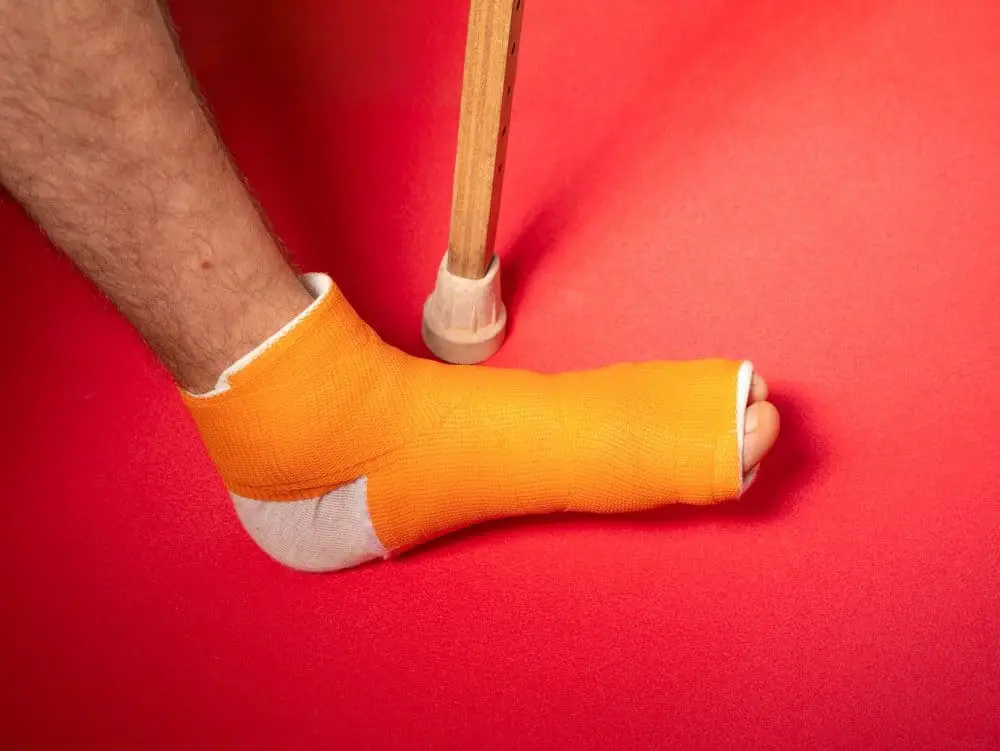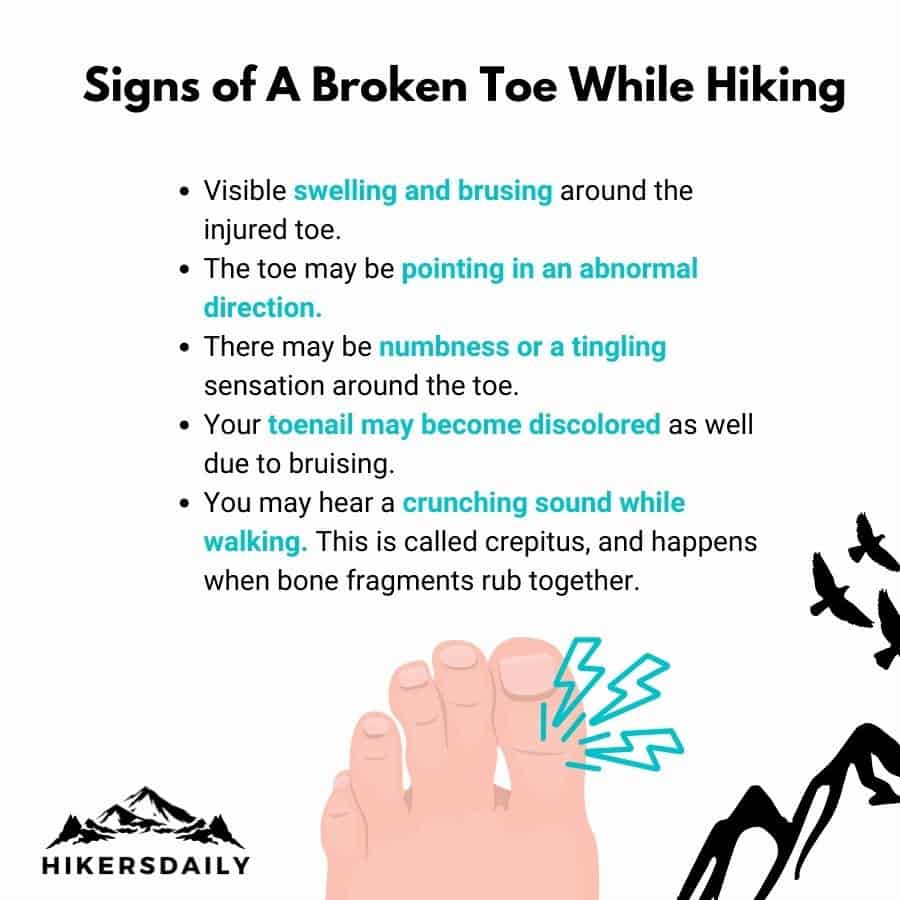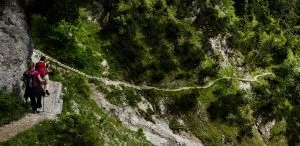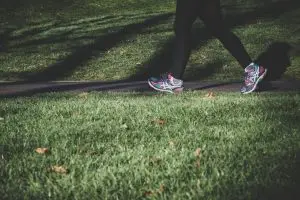Hiking With A Broken Toe (Care & Prevention Guide)

A broken toe sucks. There’s no way around it. It’s uncomfortable and breaking even your little pinky toe will have you limping like you tore your ACL. But just because you have a broken toe, doesn’t mean your hiking plans have to be put on hold (for a long time, anyways.)
So, can you go hiking with a broken toe? And what happens if you, unfortunately, break a toe while hiking? I’ll be sharing my toe-breaking experience from around 10 years ago, the aftermath, my current toe situation, and the advice I wish I had ten years prior.
Quick Links
Why Does a Broken Toe Hurt so Much?
First off, I wanna talk about why breaking a toe hurts so damn much. There are three bones in each toe, except for your big toe which has two. These bones are held together by ligaments and muscles with tendons attaching the muscles to the bone. There are also joint capsules around each of the toe joints with something called synovial fluid, that lubricates everything so your toe can move smoothly.
When you break a bone in your toe, it can either be a clean break or a jagged one. A clean break will heal much faster and with less pain than a jagged break. But regardless of the type of break, all the soft tissue around the break is going to be damaged and inflamed. This is why your toe hurts so much when you break it.
The good news is that most broken toes will heal on their own within 4-6 weeks. But the bad news is that during those 4-6 weeks, your toe is going to be stiff, painful, difficult to move, and it’s going to be painful to walk in the beginning.
My broken toe came from jamming my foot against a dresser in my bedroom. The pain was pretty bad the first day, but the following couple of days were when it was the worst. I couldn’t put any pressure on my toe without being in excruciating pain. It was so swollen that my work dress shoes wouldn’t even fit over it and I had to walk around with a limp.
The first few days were really difficult, but after a week or so the pain started to ease up and I could start putting more weight on my toe. But even after the pain subsided, I still had to be careful because if I moved my toe the wrong way it would start throbbing again.
So, Can You Go Hiking with A Broken Toe?
The short answer is no, you should not go hiking with a broken toe. The long answer is that it depends on how bad your break is and how much pain you’re in.
Despite their small size, the toes play a crucial part in our balance and movement, so even a small break can make it difficult to walk, let alone hike. Not to mention the fact that hiking puts a lot of stress on your toes and feet, which can slow down the healing process and possibly cause more damage.
If you have a clean break and the pain is manageable, then you might be able to get away with hiking for short distances on level terrain. But if your break is jagged or the pain is too much, then hiking is definitely not a good idea.
When I had broken my toe, there was no way I could have gone hiking during the first few weeks. The pain was too much and I couldn’t put any pressure on my toe without being in agony. Not to mention, my work shoes didn’t even fit over my swollen toe so I had to walk around with a limp.
However, I lived close to where I was working at the time and had to walk to and from work every day. So, I had to find a way to walk without putting too much pressure on my toe. I used crutches for the first few days (the pain was that bad), but after that, I was able to ditch the crutches and walk with a limp.
When Can You Start Hiking Again After A Broken Toe?
If you’re lucky enough to have a clean break, then you might be able to start hiking again after 4-6 weeks. However, if your break is jagged or the pain is too much, then it’s best to wait until it’s completely healed. This can take up to 8-12 weeks
According to the US National Library of Medicine, most broken toes take on average 4 to 6 weeks to heal properly, even though symptoms such as pain and edema should begin to fade sooner.
So the first thing you want to do is go see your doctor. They will be able to tell you how bad the break is and give you a better idea of when you’ll be able to start hiking again.
I’ve been there and I know how frustrating it can be to have a broken toe. You just want to get back out there and hike! But trust me, it’s not worth it to push your body before it’s ready.
Once your doctor gives you the OK, start with short hikes on level terrain and see how your toe feels. If it starts to hurt, then stop and take a break. And if the pain is too much, then it’s best to wait until your toe is fully healed before you start hiking again.
And of course, make sure to follow up with your doctor 1 or 2 weeks after your first session to ensure that everything is healing according to plan.
Take your physician’s recommendations for treatment, check in as required, and be gentle with your poor toe. It’s a great time to develop your patience, give your body time to heal, and enjoy the mental break from hiking. Before you know it, you’ll be back out on the trail and hiking like there’s nothing wrong.
What Happens if You Break a Toe While Hiking?
Toes can take quite a beating while hiking. I’ve stubbed my toes more times than I can count while outdoors (and indoors.) If you’re not paying attention, it’s pretty much inevitable that you’ll bang your toe on something.
But what happens if you actually break a toe while hiking? First, let’s go a bit more in-depth with the two types of breaks that can occur in the bones of your toes:
- A hairline crack, also called a stress fracture
- A more serious break where the bone actually cracks or shatters
Stress fractures usually happen from overuse and repetitive motion and can be common in runners. However, they can also occur in hikers if you hike long distances with a heavy backpack.
More serious breaks usually happen from impact or direct trauma to the toe. This is what we’re going to focus on since it’s more likely to happen while hiking.
So, you’ve broken your toe while hiking… now what?
If you’ve broken your toe, the first thing you should do is stop hiking and assess the situation. If you can’t walk without pain, then it’s time to call for help.
If the pain is bearable, then you might be able to continue hiking out on your own. If you have no one around to help you, then you’re going to have to tough it out and head back.
But keep in mind that even a small break can affect your balance and movement. So, take it slow and be careful.
Once you’re off the trail, it’s time to see a doctor. They will usually take an X-ray to determine the extent of the injury. From there, they will give you instructions on how to care for your broken toe.
Can You Tell If You Broke A Toe While Hiking?

It can be hard to identify if someone has a fracture or shattered bone without an X-ray. While all injuries will cause pain, there can be specific indications of a broken bone.
The most common signs of broken toes are discomfort and difficulty walking. The severity of these symptoms affects everyone differently. Some may be able to walk without any pain while others will be in agony with even the slightest touch.
Here are some other common symptoms to look out for:
- There may be visible swelling and bruising around the injured toe – although you may not see it immediately.
- The toe may be pointing in an abnormal direction or bent in an unnatural way.
- There may be numbness or tingling around the injury.
- The toe may look deformed or out of place as well. If the break is bad enough, you may even see the bone poking through the skin. Then you’ll clearly know.
- Your toenail will become discolored due to bruising (black, blue, or purple.)
- Crepitus – this is a crunching sound or sensation that happens when the broken bone moves. If you are hearing this while walking it usually means there are broken bone fragments in your toes that are rubbing together.
How Do You Protect Your Toes While Hiking?
Although accidents and injuries cannot always be avoided, the following precautions can help minimize the possibility of breaking a toe:
Choose the Right Footwear
Hiking boots or shoes that fit snugly and protect your toes are critical. Consider adding extra support if you have a history of foot injuries or issues. If you are planning to hike extra rocky and rough terrain, stay away from any open-toe sandals.
Wear Hiking Socks
Invest in high-quality, breathable socks to avoid blisters and other foot problems while hiking. Some people like to double up on socks for additional protection and warmth. If you haven’t done this before, I definitely recommend giving it a try the next time you hit the trails.
Tape Your Toes
If you have any concerns about your toe health, consider taping your toes together before hitting the trails. This will help stabilize them and prevent them from moving around too much inside your shoes. This is actually called “buddy taping,” and is a great way to prevent further injury if you have already broken a toe or suffered a broken toe while hiking.
Pack a First-Aid Kit
Make sure to pack a comprehensive first-aid kit when heading out on a hike. This will come in handy if you or someone else in your group sustains an injury. Include items such as bandages, gauze, antiseptic wipes, and painkillers.
Be Aware of Your Surroundings
Pay attention to your surroundings at all times while hiking. Look out for potential hazards such as loose rocks or roots that could trip you up. If you are hiking in the dark, use a headlamp to see where you are going.
Bring Trekking Poles
Trekking poles can help you maintain your balance while hiking and prevent falls. They are also great for helping to relieve pressure on your feet and legs. Worst case, let’s say you happen to break a toe while on the trails – trekking poles can act as makeshift crutches.
Know Your Limits
It is essential to know your limits when it comes to hiking. Avoid pushing yourself too hard and take breaks when you need to. If you are injured, do not try to tough it out. It is always best to err on the side of caution and seek medical attention if you are in pain or suspect you may have sustained an injury.
Conclusion
Hiking with a broken toe can be extremely painful. In some cases, the pain can be so severe that it limits your ability to walk or even stand. If you are dealing with a broken toe, it is important to seek medical attention as soon as possible.
In the meantime, there are some things you can do to help manage the pain and protect against your injury. My best advice? Follow the tips above and be sure to take it easy on the trails until your toe has healed completely.






